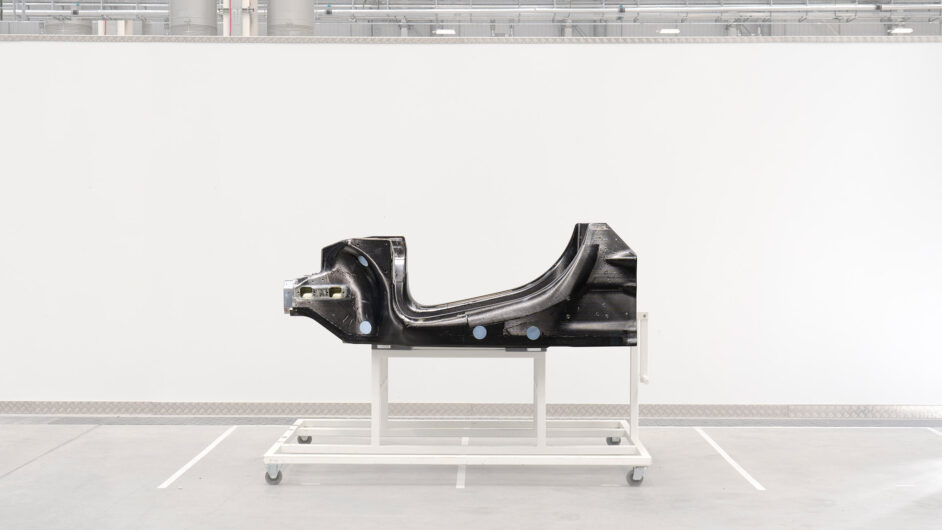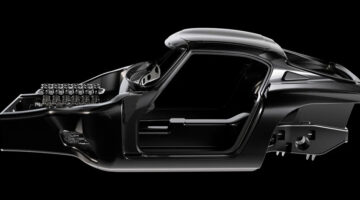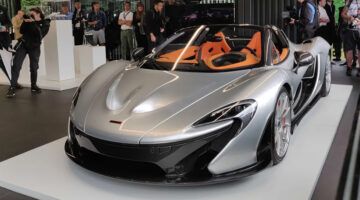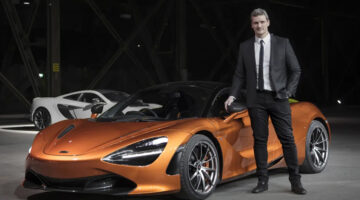All new chassis confirmed for new Sports Series range that will carry McLaren’s hybrid future.

McLaren has revealed the first details about its all-new second generation carbonfibre architecture and the first model we’ll see it on when it arrives next year. 2020 has been a tough year financially for the brand, a tide it’s hoping to turn in 2021 with a flurry of new products starting with the replacement for the 570S.
The new carbon chassis will replace the company’s current MonoCell and promises critical improvements in weight and strength over the current platform, which can trace its routes back to the MP4-12C. The new chassis will also be more adaptable, allowing McLaren to produce a wider variety of models. As with the outgoing MonoCell tub, the new chassis will consist of the floor, side rails and firewall, and still feature aluminium subframes on both ends to carry the axles and powertrains.
The new chassis will be laid, pressed and autoclaved at the new McLaren Composite Technology Centre (MCTC) near Sheffield in a more production-efficient process that aims to cut the amount of time required to produce each unit.
Engineers have designed the chassis to be more flexible than MonoCell, allowing designers and product planners more freedom allowing widely differentiate models (an often criticised element of the current range) to support a wider range of both internal combustion and full-electric powertrains.
The first model built on McLaren’s new architecture will be a replacement for the 570S, which will ditch the previous Ricardo-built twin-turbo V8 engine for an all-new twin-turbo V6, also supplied by Ricardo, bolstered by a plug-in hybrid system.
The new powertrain will allow for up to 30 kilometres of electric-only drive which requires a reasonably substantial battery pack, but McLaren has confirmed it will only have a double-digit weight increase over the current 570S, suggesting it will weigh somewhere in the region of 1450kg to 1550kg with fluids.
Total system power for the new model is said to be up on the current car’s 562bhp, and performance is also promised to be improved, despite the expected increase in mass.
Mike Flewitt, McLaren Automotive CEO is confident with the new tech, elaborating “the new ground-breaking vehicle architecture is every bit as revolutionary as the MonoCell chassis we introduced with the company’s first car, the 12C, when we first embarked on making production vehicles a decade ago.
“This new, ultra-lightweight carbon fibre chassis boasts greater structural integrity and higher levels of quality than ever before with our new MCTC facility quickly becoming recognised as a global centre of excellence in composite materials science and manufacturing.
“Our advanced expertise in light weight composites processes and manufacturing combined with our experience in cutting-edge battery technology and high-performance hybrid propulsion systems means we are ideally placed to deliver to customers levels of electrified high-performance motoring that until now have simply been unattainable.”
The 570S replacement will introduce a new take on McLaren’s design language under the design leadership of Rob Melville. McLaren has already given us an early look at the new generation of design inside and out with the Elva, a model that shares some interior design elements and features with this next generation supercar.
As previously reported the new McLaren Sports Series (if indeed McLaren continue with its segmented model range) will arrive later than initially promised due to the Covid-19 pandemic, it now arriving in the first quarter of 2021.
This article originally appeared at evo.co.uk
Copyright © evo UK, Dennis Publishing



